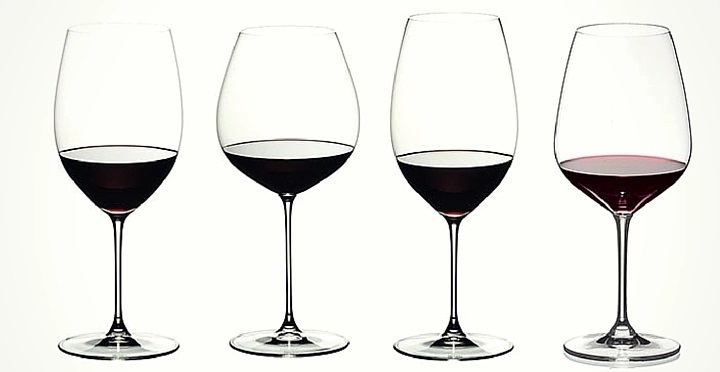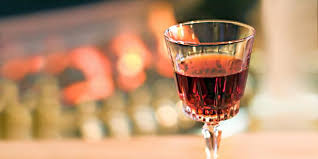Blog
That’s Going to Leave a Stain
 Quick cleanup suggestions if you spill it instead of drink it
Quick cleanup suggestions if you spill it instead of drink it
There’s nothing worse than dropping some delicious food or spilling a great drink. And while you may want to take your five-second-rule chance with the food, once that beverage hits the floor, it’s a goner. Hopefully, you’ll just be able to refill your glass, but of course, you still have the mess to deal with. If the culprit is red wine on a couch or carpet, you’ll need to stop what you’re doing and take care of it or risk a permanent stain. These tips can help:
Don’t do any of this
Wait very long
The quicker you can get to the stain, the better your results will be. Once red wine spills on fabric, it starts settling into the fibers. It’s essentially acting as a dye, so you’ll want to try to take care of it as soon as possible.
Scrub it
For any spill, the first instinct is usually to grab a towel and start scrubbing. Sure, this may get some of the wine out, but it will actually do more harm than good. You’ll probably spread it and also push it deeper into the fabric.
Apply heat
This one may sound obvious, but many people think heat will help clean up red wine and they reach for a hairdryer. Actually, it’s the exact opposite; if the stain dries as the result of heat, that stain may never come out.
Use white wine
Oddly enough, there’s a rumor floating around that says white wine will clean up spilled red wine. White wine has no cleaning abilities and if used, it may cause the stain to spread.
Do this
Use a dry material
The first thing you should do is find a dry material. Many things can work, including baking soda, baby powder, and even kitty litter. But for the best results, you should use salt. Start by covering the stain completely and then let it sit. Remember, don’t rub or scrub. After a few minutes, you can begin to blot. If you got to the stain fast enough, this may be enough to remove it.
Try some milk
Milk is actually pretty good when it comes to absorption. Cover the stain with it and wait a couple of minutes. Then use a sponge or dry towel to blot it up.
Boil water
Dry heat is bad, but wet heat can be excellent for a red wine stain. Hot water by itself won’t really clean up the wine, but it will cause it to lose its stickiness with the fabric.
Douse with club soda
Just like hot water, the old tried and true club soda will help lessen the wine’s grip on your fabric. For improved results, try using it with white vinegar.
Find your Oxi cleaner
If you have an Oxi cleaner, you probably know already how good it is at getting out stains. For your wine stain, just apply it and wait about a half hour before blotting. Oxi cleaners are even good for dried stains, so if you didn’t notice one until your party was over (or a guest neglected to inform you about it), it may get that old one out too.
Wine spills are tough (mostly because of the wasted wine), but with these tips, they don’t have to end in an ugly stain that causes you to move furniture or overturn a couch cushion. And if you don’t want to worry about wine stains in your home, just come see us at Orange Coast. We’ll take care of any spills – and always make sure your glass is full.
Does the Shape of a Wine Glass Really Matter?

It does if you want to get the best flavor
In a perfect world, whenever we want a glass of wine, we would just go over to our wine rack (or maybe take a trip down to our wine cellar) for a great bottle and then head over to our stemware cabinet for a gleaming wine glass. But in reality, we probably just grab a bottle off the counter and perhaps take a cursory look for a clean wine glass, settling for a coffee mug or anything within arm’s reach.
Wine can be great no matter what you drink it from, but to enjoy it more, you’ll definitely want to sip it from a wine glass. And on top of that, depending on your choice, you’ll want to choose the right type of glass. If you’ve ever wondered why glasses come in so many different shapes, let us explain.
It’s all about the aroma
Most people know that smell plays a huge role in the taste of wine. This is why you’re encouraged to take a nice, long whiff before you drink, as this will help you appreciate its flavor. And this is at the heart of why wine glasses have different shapes.

Reds
Red wines have a big, bold flavor, which is why red wine glasses have wide bowls. This allows the aroma to be released. Red wine is usually best at room temperature, which means holding the glass by the bowl is fine. In fact, stemless red wine glasses are gaining in popularity.
Real wine connoisseurs even have different wine glasses for specific types of red wine. For example, glasses for merlot have tapered tops and big bowls so the wine can first be swirled to open up the aroma. Pinot noir glasses are similar, but generally their stems are shorter. Port glasses have smaller bowls in order to keep the powerful smell contained.

Whites
While you want a red wine to get a lot of oxygen, the same isn’t as true for white wine. This is why many glasses have a tapered bowl and narrower rim. Because white wine is best when chilled, the glasses should be held by the stem to avoid heating it up.
Just like reds, certain whites have their own distinct glasses. Riesling glasses, for example, are tall and thin so the fruit-filled aroma will stay at the top. Sauvignon blanc glasses are also tall, and they have small bowls so the aroma can be delivered right to the nose.

Sparkling wine
There’s a reason we’re supposed to drink sparkling wine – or champagne – with those incredibly narrow glasses known as flutes. This is so the bubbles will hit your tongue as soon as you take a sip. The thinness of the glasses is also meant to make the carbonation last as long as possible. And let’s not forget the aesthetic appeal of those upward traveling bubbles, showcased nicely in those long bowls.

Dessert wine
To get the best taste from a dessert wine, you’ll want to pick a glass that is tall and tapered. The best dessert wine glass has a bowl designed to highlight its acidity but at the same time balance its sweetness.
Now, we’re not suggesting you go out and buy dozens of new glasses for you and your friends, but if you’ve got a particular favorite wine, it may be worth picking up the perfect kind of glasses to boost your enjoyment. For some more tips about drinking wine – with the added bonus of actually getting to drink wine – we’d love to see you at Orange Coast. We’ll make sure whatever you’re drinking, it comes in the perfect glass.
What to Expect if You’re Told the Master Sommelier will Help You with Your Wine Selection
 Feel honored if one offers to help you select your wine – as there are only a couple hundred of them worldwide.
Feel honored if one offers to help you select your wine – as there are only a couple hundred of them worldwide.
You were already impressed by the restaurant, but now it just skyrocketed. You’ve just been told that a Master Sommelier will assist you with your wine selection.
You’ve heard the term. You know it means this person knows a lot about wine – a whole lot. But other than that, you’re not quite sure what this person can or should do when they show up at the table. Here’s what you should know.
Master Sommeliers are incredibly rare
The first thing you should know is that you’ll be talking wine with someone who has a designation that has been bestowed on only a couple hundred people worldwide. A Master Sommelier is someone who has earned a diploma by successfully passing a 3-part test given by the Court of Master Sommeliers.
It sounds like an organization that’s been around awhile, but it hasn’t. The Court of Master Sommeliers was established in 1977, though the first exam was given in 1969. Yes, for all the pomp and circumstance surrounding the name, this is actually an organization supported by the British Hotels & Restaurants Association, the Wine & Sprit Association of Great Britain, and the Wholesale Tobacco Trade Association.
Which is why the Master Sommelier about to arrive at your table also will be highly knowledgeable about beer and cigars.
What it takes to be a Master Sommelier
In order to earn this rare and exclusive degree, one must pass all 3 sections of a difficult exam:
- The first is a verbal exam on restaurant services and salesmanship. This is where the prospective Master Sommelier will be asked to show knowledge and understanding about pairing wines with foods, and also demonstrate their knowledge of all types of liqueurs which are available.
- The second section tests theoretical knowledge, including knowledge of international wine laws and demonstrating how to decant or store wines.
- The third is the part that gets all the attention. Each participant must, within 25 minutes, satisfy the examiners with his or her ability to accurately identify 6 different wines in a blind taste. They must identify the grape varieties used in the wine, as well as its country of origin down to the district and the wine’s vintage.
The test is so difficult that most candidates must take it anywhere from 2 to 6 times before passing all 3 parts.
4 steps to mastership
The Court of Master Sommeliers has 4 levels of certification.
- Level I Introductory: This can be taken by anyone who has general knowledge and experience in the restaurant industry. You’ll take 2 days of classes and then must pass a multiple-choice exam.
- Level II Certified Sommelier was first offered in 2005 to bridge the gap between the introductory and advanced levels. It focuses more on service and has a 3-part test that includes blind tasting 4 wines.
- Level II Advanced Sommelier certification can only be awarded if you’ve passed the Level II exams and you take the Advance Sommelier course offered twice yearly. You must pass with a 60% or better grade in each of three exams—and all 3 exams must be passed together.
- Level IV Master Sommelier certification requires you to have worked in the industry for at least 10 years, above and beyond passing the 3-part test. You don’t have to pass all 3 parts together, but you have just 3 years to pass all portions.
Don’t be misled
There are actually 2 coveted credentials for those who seek to be an acknowledged wine expert. The first is the Master Sommelier (MS), and then there is the Masters of Wine (MW).
This second credential is awarded by the Institute of Masters of Wine. It’s just as exacting in terms of the knowledge that must be amassed. The biggest difference is that someone who holds a MW credential will know more about the entire wine industry, from growers to the general consumer.
The test is similar to the one given to a Master Sommelier. There’s a theory exam, as well as a blind tasting. The final part is more scholarly, though. Each candidate must write a research paper about a wine-related topic. It has to be between 6,000 and 10,000 words in length.
Which credential would be preferable in helping you choose your wine for the evening? Both are recognized as the highest credential awarded in the world of wine. So, individuals with either of these credentials would be extremely knowledgeable about the wines available.
A Master Sommelier, however, has taken an exam that certifies excellence in the hotel and restaurant beverage service. In other words, they may be more pleasant to talk to.
Perfect Endings: What to Know About Dessert Wines

Dessert wines are known for their bold flavors, to be sure. But they also offer up subtle nuances that a sweet dessert might mask.
A glass of wine to accompany your dessert? Or, maybe a glass of wine instead of dessert. Don’t hesitate. It’s an opportunity to discover another side of wine.
They’re called “dessert wines,” and they mostly earn this moniker because of their high sugar content. The world will not end if you decide to have a glass at times other than the end of a meal. It is, though, one of the best times to enjoy a glass. Here’s what you need to know about dessert wines.
What are dessert wines, anyway?
There are as many definitions as there are opinions—and what would you expect of wine? However, the consensus is that a dessert wine is wine which has a higher residual sugar content than you would normally encounter. Here’s some perspective:
A wine is considered “dry” if it has less than 1% residual sugar. Compare this to a dessert wine, which may have from 3% to 28% residual sugar. There is no specific grape that makes a dessert wine. Most varietals become such because of how they are made.
The process of making a dessert wine
They say timing in life is everything. For dessert wines, this means a late harvest. Winegrowers leave the fruit on the vine to over-ripen. It’s a process also known as “raisining,” and it allows the sugar level of the grapes to intensify while decreasing the juice content.
Sometimes, a specific grape rot called Botrytis also sets in during the raisining process. Winegrowers refer to this as a beneficial fungus, while other fruit-growers are alarmed by its presence. It’s the last thing you want to see on your strawberries, but it’s sometimes cultivated for certain dessert wines.
These raisined, sometimes-rotted grapes are then crushed for a much smaller yield of juice, which is then fermented just like other wine. There’s so much sugar that the yeast can’t eat it all before it creates alcohol and expires.
You’re left with low-alcohol, high-sugar wines that are bursting with flavor and sweetness. It’s not uncommon for dessert wines to be sold in half bottles. Don’t expect a break on the price for half the amount of wine, though. The liquid is rich, so you sip and savor it. And, since there’s less juice from these late harvest grapes, it takes more to make even that half bottle.
Ports are not late harvest wines
Late harvest wines have a low alcohol content. That’s not the case with port dessert wines. Port is what’s known as a “fortified” wine. A grape-based spirit—usually brandy—is added to the wine. The result is an alcohol content of about 18%, as well as a high sugar content.
Purists will argue that true port wines originate only from Portugal or Spain. You will, however, find port wines made from many countries and all different kinds of grapes. Non-port dessert wines do not last long once opened, and they usually don’t age well. Both characteristics are due to the low alcohol content. Port’s much higher alcohol content means you can open a bottle and appreciate it for some time to come.
There two main types of port. Ruby port is less expensive and more extensively produced. It’s aged for three years after fermentation in large closed oak vats. This preserves the rich red hue and bright, fruity flavors. Tawny port is allowed to evaporate or oxidize in barrels that are allowed to breathe. The result is a brownish or golden color, as well as a nutty flavor.
Ice wines
These wines have a bit more in common with late harvest dessert wines—but they will be even costlier. Ice wines are made from grapes harvested after the first autumn frosts. So, not only are they raisined and maybe rotted, but they’re also frozen. Does it surprise you that Germany and Canada are the largest producers of ice wines?
The grapes are crushed while still frozen so that the water content isn’t added. You’re left with almost pure grape nectar, and it takes a whole lot of grapes to get a season’s pressing. That’s what makes ice wine so expensive.
Skip the dessert
Feel free to have just a glass of dessert wine, with no actual dessert to accompany it. These wines are known for their bold flavors, to be sure. But they also offer up subtle nuances that a sweet dessert might mask. There’s nothing wrong with skipping the cheesecake and having just a glass of dessert wine.
That said, it’s true that there are some awesome pairings—such as a glass of port with a chocolate torte, or maybe a glass of ice wine with an unadorned bowl of vanilla ice cream.